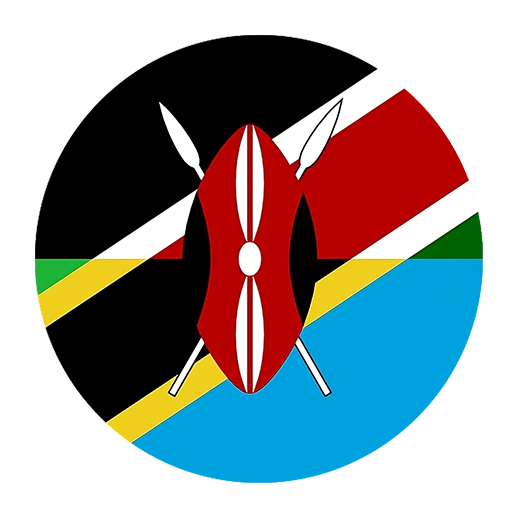Learning a new language is an exciting and challenging endeavor. For English speakers interested in expanding their linguistic horizons, Swahili offers a rich and vibrant language experience. Swahili, or Kiswahili, is spoken by millions across East Africa and serves as an official language in countries like Kenya, Tanzania, and Uganda. Developing a Swahili language learning portfolio can significantly enhance your learning journey by providing structured, personalized, and goal-oriented study plans. This article will guide you through the process of creating a comprehensive Swahili language learning portfolio.
Understanding the Importance of a Language Learning Portfolio
A language learning portfolio is a personalized collection of resources, tools, and self-assessments that help track your progress and keep you motivated. It serves as a roadmap for your language learning journey, ensuring that you stay organized and focused on your goals. Here are some reasons why a language learning portfolio is essential:
1. **Structured Learning**: A portfolio helps you organize your study materials and activities, making your learning process more efficient.
2. **Goal Setting**: It allows you to set specific, measurable, achievable, relevant, and time-bound (SMART) goals.
3. **Progress Tracking**: By regularly updating your portfolio, you can monitor your progress and adjust your study plans accordingly.
4. **Motivation**: Seeing your progress and achievements can boost your motivation and keep you committed to learning.
5. **Personalization**: A portfolio allows you to tailor your learning experience to your interests, strengths, and weaknesses.
Steps to Develop Your Swahili Language Learning Portfolio
1. Define Your Goals
Before you start building your portfolio, it’s essential to define your language learning goals. Ask yourself why you want to learn Swahili and what you hope to achieve. Your goals might include:
– Conversational fluency for travel or work
– Understanding Swahili culture and literature
– Academic or professional purposes
– Personal enrichment and cognitive benefits
Having clear goals will help you stay focused and motivated. Write down your goals and refer to them regularly to ensure you stay on track.
2. Assess Your Current Level
It’s important to know your starting point. Assess your current proficiency in Swahili using a self-assessment tool or a formal language proficiency test. The Common European Framework of Reference for Languages (CEFR) provides a useful scale for evaluating language skills, ranging from A1 (beginner) to C2 (proficient). This assessment will help you identify your strengths and areas for improvement, guiding your study plans.
3. Gather Resources
A well-rounded language learning portfolio should include a variety of resources. Here are some essential resources to consider:
Textbooks and Workbooks: Choose reputable Swahili textbooks and workbooks that cover grammar, vocabulary, and cultural contexts. Examples include “Simplified Swahili” by Peter M. Wilson and “Colloquial Swahili: The Complete Course for Beginners” by Lutz Marten and Donovan McGrath.
Online Courses and Apps: Utilize online platforms like Duolingo, Memrise, and Babbel, which offer interactive Swahili courses. Websites like Udemy and Coursera also provide comprehensive Swahili language courses.
Audio and Video Resources: Listening to native speakers is crucial for developing your listening and speaking skills. Watch Swahili films, TV shows, and YouTube channels. Listen to Swahili music, podcasts, and radio stations.
Language Exchange Partners: Find language exchange partners through platforms like Tandem, HelloTalk, and ConversationExchange. Practicing with native speakers will help you improve your conversational skills and gain cultural insights.
Dictionaries and Phrasebooks: A good Swahili-English dictionary and phrasebook are essential tools. “Kamusi ya Kiswahili-Kiingereza” by TUKI and “Swahili-English Pocket Dictionary” by Nicholas Awde are excellent choices.
Flashcards and Vocabulary Lists: Use flashcards (physical or digital) to memorize vocabulary. Apps like Anki and Quizlet allow you to create customized flashcards.
4. Create a Study Plan
A well-structured study plan is vital for effective language learning. Break down your goals into smaller, manageable tasks and allocate specific times for each activity. Here’s a sample weekly study plan:
– **Monday**: Vocabulary practice (30 minutes), Grammar exercises (30 minutes)
– **Tuesday**: Listening practice (1 hour), Speaking practice with a language partner (30 minutes)
– **Wednesday**: Reading comprehension (1 hour), Writing practice (30 minutes)
– **Thursday**: Vocabulary review (30 minutes), Cultural study (1 hour)
– **Friday**: Speaking practice (1 hour), Grammar review (30 minutes)
– **Saturday**: Watch a Swahili movie or TV show (1.5 hours), Vocabulary practice (30 minutes)
– **Sunday**: Free day or review previous week’s materials (optional)
5. Track Your Progress
Regularly updating your portfolio with your achievements and reflections is crucial for staying motivated and making adjustments to your study plan. Here are some ways to track your progress:
Language Journal: Keep a language journal where you document your daily or weekly study activities, new vocabulary, grammar points, and reflections on your learning experiences.
Progress Charts: Create charts or graphs to visualize your progress in different language skills (listening, speaking, reading, writing).
Self-Assessments: Periodically assess your proficiency using self-assessment tools or formal tests. Compare your results over time to see your improvement.
Feedback from Language Partners: Ask your language exchange partners or tutors for feedback on your speaking and writing skills. Incorporate their suggestions into your study plan.
6. Incorporate Cultural Learning
Language and culture are deeply intertwined. Understanding Swahili culture will enhance your language skills and provide context for your learning. Here are some ways to incorporate cultural learning into your portfolio:
Read Swahili Literature: Explore Swahili literature, including novels, short stories, and poetry. Authors like Shaban Robert and Euphrase Kezilahabi offer rich literary works that provide cultural insights.
Study Swahili History and Traditions: Learn about the history, traditions, and customs of Swahili-speaking communities. This knowledge will deepen your appreciation of the language.
Participate in Cultural Events: Attend Swahili cultural events, festivals, and workshops in your community or online. Engage with native speakers and immerse yourself in the culture.
Watch Documentaries and Films: Watch documentaries and films that explore Swahili culture, history, and contemporary issues. This will provide context for your language learning and enhance your listening skills.
Tips for Effective Swahili Language Learning
1. Consistency is Key
Consistency is crucial for language learning. Make language practice a daily habit, even if it’s just for a few minutes. Regular exposure to the language will help reinforce your learning and improve retention.
2. Practice Speaking Early
Don’t wait until you feel “ready” to start speaking. Begin practicing speaking from the early stages of your learning. Use simple phrases and sentences, and gradually build your confidence. Speaking practice will help you internalize grammar and vocabulary more effectively.
3. Embrace Mistakes
Making mistakes is a natural part of language learning. Don’t be afraid to make errors, as they are valuable learning opportunities. Learn from your mistakes and keep practicing.
4. Use Authentic Materials
Incorporate authentic materials, such as news articles, songs, and conversations, into your study routine. Authentic materials provide real-life context and expose you to natural language usage.
5. Engage with the Language Community
Join online forums, social media groups, and local language meetups where you can interact with other Swahili learners and native speakers. Engaging with the language community will provide support, motivation, and opportunities for practice.
6. Be Patient and Persistent
Language learning is a long-term commitment. Be patient with yourself and stay persistent, even when progress seems slow. Celebrate small achievements and keep your long-term goals in mind.
Conclusion
Developing a Swahili language learning portfolio is a powerful strategy for achieving your language learning goals. By setting clear objectives, gathering diverse resources, creating a structured study plan, tracking your progress, and incorporating cultural learning, you can enhance your language skills and enjoy a fulfilling learning journey. Remember to stay consistent, embrace mistakes, and engage with the language community. With dedication and perseverance, you’ll be well on your way to mastering Swahili and unlocking new opportunities and experiences.

